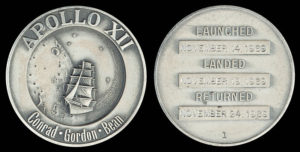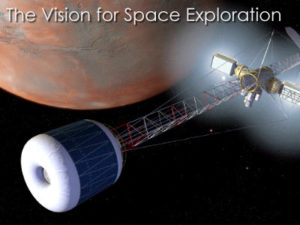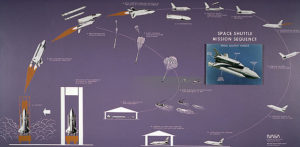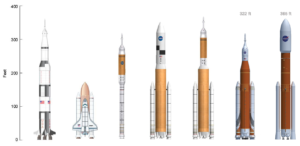Liftoff! Rules Summary
Liftoff! Rules Summary
Money

Money is measured in millions of dollars and each agency has a budget allocated to it by its government which is paid into cash in hand each turn. Luckily unspent funds are carried forward and not clawed back. Your budget is affected by events and by the success or failure of missions.
Money can be spent on:
- Resolving events
- After receiving its budget each agency draws an event card which will be immediately resolved. Some events require the immediate expenditure of cash. Following resolution of the event each card typically modifies the budget of the agency for the following year (Agencies with a high budget will typically see that budget fall while those with a low budget will typically see an increase).
- Starting new research programs
- Each research program has an initial cost to start the program and comes with a free example of the hardware. If you have an existing similar program your new program will start at a higher initial safety factor as shown on the R&D worksheet.
- Buying new hardware
- When you need an additional examples of the hardware after the first one you must buy the additional pieces of equipment either from your program or, if you can negotiate it, from another space agency
- Buying R&D dice
- Each program will require research in order to improve its safety factor. Each turn you can buy up to 8 six-sided dice of research for each of your research programs with each die costing the stated amount on the R&D worksheet.
- Training new astronauts
- While you don't have to pay for the astronaut's living costs, you do have to pay for the initial training at a cost of $2m each (except for the very first astronaut hired by an agency, whose training costs $18m)
- Buying new launch facilities
- Every mission launched needs to be launched from a launch facility. Your space agency starts with one launch facility (which allows one launch per year). Additional launch facilities cost $30m
- Repairing damaged launch facilities
- Damaged facilities (either from storms or from rockets exploding) can be repaired at a typical cost of $15m
Budgets and Cash-in-hand will be declared in the newspaper and hence you will be able to see this information about your rival agencies as well as your own.
Research and Development

Every program has a safety factor recorded as a percentage value. This starts at an initial value (typically 10%) as shown on the R&D worksheet and has a maximum rating that can be achieved by performing Research and Development and an absolute maximum. When a piece of equipment is used on a successful mission it is granted a 1% boost to its safety factor (up to the absolute maximum). When a piece of equipment is the cause of catastrophic failure (i.e., it caused the death of an astronaut) its safety is reduced to its initial value. In this case it may be researched back up to the best value it has ever had.
Your agency automatically has the Photo Reconnaissance program at no cost. This has an initial safety factor of 65% and may be raised to 100%. However it can only be raised by missions that include a "lunar orbital activities" safety check (whose success raises the safety factor by 5%) or by Lunar Probe Landing missions (which, if successful, raise the safety rating by 15% and, if not successful, but did complete a lunar de-orbit burn raise the safety rating by 5%).
Docking can not be improved by research but only by practice. Every attempt at a docking raises the safety rating by 5%, plus an additional 10% if the docking is successful.
Choosing Future Missions

You must plan in this turn exactly what missions you intend to launch in the following turns. The mission plan must state what the mission is (from the list of available missions), what kind of equipment is to be used and who (if any) the astronauts who will fly the mission. You may also designate a backup crew for the mission in case a member of the primary crew is affected by a event or death. Any given astronaut may only take part in one mission per year. You also need to declare the order of the missions you have planned.
All of these plans are declared as part of your orders for the turn, but only the number of launches you have planned will be announced to other players via the newspaper unless you order otherwise or the mission is a joint one.
Deciding whether to rush any of this year's missions

Normally missions are launched in December in order of agency's budgets, with the agency with the lowest budget launching first. However if you wish to launch earlier than this, you may choose to rush one or more of your launches planned for this turn. Each month of rushing costs $1m and the rushed mission has a 1% (per month of rushing) penalty on its safety factors on every mission step.
Deciding whether to "scrub" any of this year's missions
If, as a result of bad research, lack of hardware or as a result of catastrophic failure of an earlier mission, you feel it is unwise to launch one or more of the missions you have planned you can scrub
the mission. Each mission that you scrub will count as a failure, but not a catastrophic one. If only the launch of the scrubbed mission was announced, the press can only assume that it was a orbital satellite and your budget will only be reduced by $3m.
Carrying out of missions

Each mission is made of a set of mission steps. On each step a percentile die is rolled against the safety factor of the relevant piece of equipment (for example, the initial step of every mission is rolled against the rocket used). If the roll is equal to, or less than, the safety factor, the mission step is successful and mission proceeds. If the roll is higher than the safety factor, a problem arises with that piece of kit and a roll is made against the failure chart of that mission step. The result may be a minor problem (e.g., a problem with the countdown that is resolved the same day), more serious or even catastrophic (e.g., the rocket explodes on the launch pad).
In some cases the failure may leave the astronauts stranded in space. If they are not rescued by the end of the year they will die and the failure counted as catastrophic (if rescued, the astronauts survive and the mission counts as merely "failed").
Budget effects of missions

If a mission is successful your agency's budget will be immediately increased. If this the first time a particular mission has ever succeeded (across all agencies), the increase will be substantially increased (with smaller increases for the second and third agency to successfully complete a mission).
If a mission fails your agency's budget will be reduced.
Successful rescues increase your budget by $12m, while failed rescues still increase your budget by $8m. If multiple agencies participated in the rescue every agency gets the relevant increase.
Diplomacy and Capitalism

Joint missions may be conducted if both (or all players) include the joint mission in their orders (it is a failed mission for all participants if the mission fails to launch for any reason). The orders need to indicate who is providing which components of the mission.
Players may sell equipment (but not programs or research) to each other. The seller may choose (secretly) to reduce the safety factor of the equipment provided but if the equipment fails catastrophically, the provider of the equipment will be forced to reduce the safety factor of that program to its initial value as usual (the user of the equipment will suffer the budget effects of the failure).
Astronauts

Every astronaut has a chance to recover a mission from many of the effects of a component failure (e.g., an astronaut may be able to fix radio but they will be unable to prevent a rocket from exploding). Every previous mission that an astronaut has flown gives that astronaut a 10% percent chance of fixing those problems that can be fixed. For a multi-person crew, the chance will be averaged across the members of the crew.
Maximum Lift capacity

Every rocket has a maximum lift capacity rating. The total weight of equipment launched by a rocket may not exceed that maximum. Multiple missions may be launched from a single rocket as long as this maximum weight is respected (Obviously, if the rocket explodes on launch, all the missions being launched will count as failures (and catastrophic ones if the relevant missions were manned).
Liquid Fuel Strap-ons are not independent rockets, but are "strapped onto" another rocket to increase its maximum lift capacity by 1000. When Liquid Fuel Strap-ons are used, the safety factor for launching the rocket is the average of both the liquid fuel strap-ons and the rocket to which it is attached.
Images on this page from nasa.gov (directly or indirectly) or listed on wikimedia.org as public domain except for the first image which is (indirectly via wikipedia) courtesy of Heritage Auctions and the last image which is CC-BY-SA by "SchuminWeb, Craigboy" (according to wikimedia).
Last updated: January 12, 2023 at 11:26 am